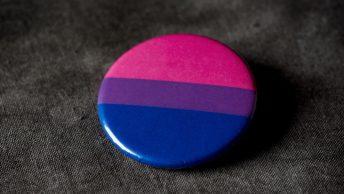
Op de website IHLIA Research schrijven wetenschappers en studenten regelmatig over lhbti-onderzoek. De nieuwste bijdrage voor de blog is van Andrés Ibarra Cordero
In the humanities, queer theory scholars are currently engaged in an emerging discourse of “queer temporality”, their dialogue concerns the many ways in which the heterosexual (and thus, “hegemonic”) worldview has shaped the experiences and expectations of time.
In attempting to imagine the queer temporal experience, this criticism explores and interprets alternative temporal orientations and directionalities, both independent of and in relation to that schema established and reinforced by the hegemonic worldview of history.
Andrés Ibarra Cordero is a Ph.D. researcher at the Amsterdam School for Cultural Analysis.
He has recently written a thesis about queer fiction, from a cross-cultural and comparative perspective. He will defend his doctoral dissertation on October 28
In this line, queer scholars have distinguished the importance of literary narratives to communicate and implement expectations of temporal experience. If the sociocultural imposition of a “happily ever after” convention has been discussed as the linear progression of hegemonic expectations of marriage, reproduction, and futurity, “queer time”, on the contrary, has a particular meaning that eddies outside that normative script.
As such, queer time’s alterity emphasizes the “outsider” cultural status. In her seminal book, Time Binds: Queer temporalities, Queer histories, Elizabeth Freeman argues that the dominant perspective of time, dictates the lifestyles and identities of subjects:
Naked flesh is bound into socially meaningful embodiment through temporal regulation: binding is what turns mere existence into a form of mastery … people are bound to one another, engrouped, made to feel coherently collective, through particular orchestrations of time … a technique by which institutional forces come to seem like somatic facts.
Elizabeth Freeman (2010, p. 3)
As such, time would represent a scheme of belief upon which cultural connections and mechanisms of control are established. Consequently, heterosexual identity and its experiences frame the dominant discourses, arranging a unifying temporal ideology of forward linear movement with the personal objectives of marriage, reproduction, and the famous “happily ever after” that seems to resist death’s inexorableness.
However, if we choose to think of time as interpretable—of the shape, direction, and meaning of time as unfixed—we may find a multiplicity of queer potentials. The notion of queer temporality undertakes an avant-garde examination of time and its sociocultural effects, finding the variousness of temporal experience to be prospects for reformulating our received ideas surrounding time, sexuality and its mechanisms of power.
This queer critical lens functions to outline the boundaries of a heteronormative approach, locating potential for disruption and overturning of temporal control via the experience and considerations of “queer lifestyles”. Indeed, time is not immune. Freeman concludes her book, claiming that, “this is just what queer critique must do: use our historically and presently quite creative work with pleasure, sex, and bodies to jam whatever looks like the inevitable” (p. 173).
Throughout this blog post, there have been discussions about the vulnerabilities, impacts, and outcomes of sexual abuse against the transgender, non-binary, and those who are gender-non-conforming communities.
The expected outcome of time’s relationship to the human condition is, of course, death. In this line, much discussion of queer temporality is often focused on death and the relationship of physical ending to freedom of self-expression.
Among the first scholars to discuss this idea of queer temporality, Eve Kosofsky Sedgwick highlights the paradox of the relationship between death and eternity. The death of Sedgwick’s close friend to AIDS, closely followed by her cancer diagnosis, offers some explanation as to why Sedgwick dismissed the impact of those years of theorizing. Her emphasis on temporality happened in conjunction with proximity to death. Invoking the paradoxical interweaving of death and eternity, Sedgwick recommends that perceived endings create more connections. Sedgwick claims:
Maybe the queer moment, if it’s here today, will for that very reason be gone tomorrow. But I mean the essays collected in this book to make, cumulatively, stubbornly, a counterclaim against that obsolescence … Queer is a continuing moment.
Eve Kosofsky Sedgwick (in Gallup 2011, p. 68)
The study of temporal experience concerning personal identity suggests a potential for endlessness. The relationship between mortality and eternity appears intimately bound within the boundaries and pluralities of identity.
The dichotomy between linear futurity and disregard for reproductive eternity is the focus of Edelman’s seminal book, No Future: Queer Theory and the Death Drive (2004). Edelman asserts that procreation puts forth a cultural myth of reproductive futurity to which heterosexuals are slaves. The expectancy of the heterosexual is to live forever through reproduction, an entitlement that describes heterosexuality and its experiences. Along this physiological difference, Edelman describes queer sex as that which is without reproduction.
Thus, queer rejects the heterosexual purpose to procreate so that each coming is a “little death” (to take the direct translation of the French term for orgasm, la petite mort). Edelman considers this satisfaction via pleasure versus a need for immortality as the reason for the heterosexual establishment being so threatened by even the existence of homosexuality.
In her book, The Queer Art of Failure (2011), Jack. J. Halberstam expands Edelman’s theory of reproduction-based temporal experience to include other forms of “queer” lifestyles. Halberstam goes on to find the queer’s behavioural disinterest and/or inability to “succeed” in the heterosexual expectation of procreation as an opportunity for reversal (p. 106). Halberstam situates the absence of queers from traditional markers of hegemonic success, reproductive or otherwise, as an indication of a determined form of losing.
The result of this reframing is the transformation of otherness into a radical way of declining to accept the logic of power. Halberstam’s notion of failure shows “that alternatives are embedded already in the dominant and that power is never total or consistent” (p. 88). As such, queerness and heterosexuality are entwined and relational. Halberstam provides a necessary perspective shift of rightful pride in a lifestyle that has been rendered illegitimate. Halberstam’s analogy works instead to show the truly relational definitions of “gayness” and “straightness” (one does not exist without the other).
Halberstam’s expansion of Edelman’s trailing at reproduction into broader realms of behaviour draws attention to the exclusion of many same-sex couples and single homosexuals who desire children, transsexuals who have reproduced before transitioning, as well as heterosexuals who have no intention of reproducing.
Halberstam’s work seems to self-consciously focus on the “team” outlook eclipsed by the visibility of the LGBTQ+ continuum and the progress made toward acceptance of flexible identities. Hence, we wonder how theories of queer temporality will evolve as sexuality study expands to meet a multiplicity of identities beyond gay and straight. Advances in fertility medicine and evolving state laws surrounding the definition of marriage enable everyone to have biological children, and while the availability of this option may currently rely upon financial wealth, the rapidity of political and pharmaceutical change suggests that this may not always be the case.
The absence of these exceptions from the notion of queer temporality not only privileges fixed definitions of what it means to be both gay, queer and straight, but omits more orientations from the world. As definitions and expectations develop within the field of queer temporality, does the discussion turn once again to what is queer? Failure to succeed in either or just one category of temporal experience sheds light upon the yet negative space between “ports” in the early establishment of queer temporality, raising the question again, is it “queer enough”?
Donald Hall’s book, Queer Theories (2003) surveys scholars in his effort to determine the definition of queerness, finding it to signify much more than same-sex desire.
Hall cites Eve Sedgwick’s Tendencies: “One of the things ‘queer’ can refer to: the open mesh of possibilities, gaps, overlaps, dissonances and resonances, lapses and excesses of meaning when the constituent elements of anyone’s gender, of anyone’s sexuality are made (or can’t be made) to signify monolithically” (in Hall 2003, p. 70). Hall declares, “queer theory, unlike lesbian theory or gay male theory, is not gender specific. In fact, like the term ‘homosexual,’ queer foregrounds same-sex desire without designating which sex is desiring” (p. 55).
Thus, ‘queer’ serves as an umbrella term for gay, working to unite disparate populations, sexes, genders, and orientations toward the common cause of awareness and rights for alternative sexualities outside heterosexuality. Hall further differentiates the gay-rights recuperation of the queer (meaning homosexual) from a ‘queer’ adjective describing the theoretical lens put forth by several scholars:
“Unlike gay identity, which, though deliberately proclaimed in an act of affirmation, is nonetheless rooted in positive fact of homosexual object-choice, queer identity need not be grounded in any positive truth or in any stable reality…Queer is by definition whatever is at odds with the normal, the legitimate, the dominant.”
(p. 55)
These examples of historical renderings and advantages of the term ‘queer’ illustrate the ways in which its different parts of speech have been adopted for multiple purposes, all the time serving to offer variation from the normative orientation, power dynamic, or analytical framework. As Hall asserts, “the concept ‘queer’ emphasizes the disruptive, the fractured, the tactical and contingent” (p. 5). As this emphasis distinguishes between ‘queer’ as a sexual practice and the term’s significance as a lens of criticism.
In my doctoral thesis, I have analysed a corpus of late twentieth-century literary narratives from this queer critical lens, incorporating seminal works of voices in the discourse of queer temporality.
Indeed, the conjunction of (homo)sexual desire and time is related to issues of gendered/sexual identity. In this way, the multiplicity of temporal experiences varies with many aspects of identity, one of which is sexuality. The “othering” implications of the concept of “queer” render individual representations of alternate lifestyles illustrative of a homogeneous experience, as opposed to descriptive of an individual situation and experience typically allowed by heterosexual representations.
My research undertakes a discussion of queer temporalities—queer chronotopes— carrying to more time-space configurations the ideas already at work within the discourse and furthering our comprehension of queer temporal experience as both manifold and interpretable.
However, my exploration of the relationship of time to sexuality does not mean to suggest that heterosexual temporal experience is fixed. The reframing of time as a tool of control renders temporal experience available for wielding and reconsideration by everyone and anyone. When we begin to see time as a tool of control, a discernible piece of the dominant ideology, we find that we are just as capable of wielding temporal experience, the meaning it makes for us, and all our identities.
Works Cited
Edelman, Lee. No Future: Queer Theory and the Death Drive. Durham: Duke University Press, 2004.
Freeman, Elizabeth. Time Binds: Queer Temporalities, Queer Histories. Durham: Duke University Press, 2010.
Gallup, Jane. “Sedgwick’s Twisted Temporalities, ‘or even just reading and writing.’” Ed. McCallum and Tuhkanen. Queer Times, Queer Becomings. Albany: State University of New York Press, 2011.
Halberstam, Jack J. The Queer Art of Failure. Durham: Duke University Press, 2011.
Hall, Donald E. Queer Theories. New York: Palgrave Macmillan, 2003.







